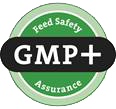- Home
- Seeds
- Catch/Cover crops
- Plants for catch/cover crops
- Berseem clover (annual) TABOR
FOR CONSULTATIONS APPLY TO:
Commercial director
Lina Smalskienė
tel. +370 618 02 551
e-mail linak@agrolitpa.lt
Sales manager
Tautvydas Kliučininkas
tel. +370 681 35 093
e-mail tautvydask@agrolitpa.lt
Sales manager
Eglė Petkevičienė
tel. +370 626 95 458
e-mail eglep@agrolitpa.lt
Sales manager
Kotryna Nakrošytė
tel.: +370 601 39 282
e-mail kotryna@agrolitpa.lt
Products
Berseem clover for fodder or green manure, light grazing, only single cut crop
- Only single cut
- Can be sown both in spring and at the end of summer
- Leafy fresh forage with high nutritional value
- Perfect for soil improvement
- Can be companion plant to winter rapeseed
- Fast growth
- Late flowering
- Early ripening
- Only 1 harvest
- Produces a lot of biomass in a short period (under medium humidity conditions)
- 7 t/ha of dry mass can be obtained (in Israel) when cultivating for 120 days
- Plants – erect
- The roots can reach a depth of 60-70 cm
- High quality, non-bloating forage
- Protein content – 14-18 % (other sources – 25 %)
- Suppresses weeds and protects against erosion
- Saves growers costs on fertilizers and herbicides
- As green fertilizers can be used after 40-50 days of growth (ploughed/incorporated into the soil)
- For fodder can be cut after 60-70 days of cultivation
- Can be sown both in spring and at the end of summer
- Suitable for most soils
- Likes alkaline soils, tolerates saline soils
- Suitable pH – 5.5-8.0
- About 500 mm of rainfall is required for growth
- It can accumulate 100-200 kg/ha of biological nitrogen in the soil
- Can be grown alone or in mixtures for green fodder
- The pure crop does not tolerate grazing, but is suitable for sowing in pasture mixtures to improve the quality of forage
- Clover of this variety, together with vetch, can be sown with winter rapeseed. Once germinated, clover grows quickly and overshadows weeds. With the onset of frost, vetch and clover are frozen, and their biomass and biological nitrogen stored in the nodules increase the yield of rape
- Use: for silage, light grazing, green manure
- Yield of the 1st cut – 4.0 points
- Total yield – 5.5 points
- General appearance – 3.0 points
- Crop establishment – 3.0 points
- Competitiveness – 5.0 points
- Amount of dry matter – 4.7 points
- Overall indicator – 4.17 points
*Source: Egyptian clover variety test results 2010-2012. AGROSCOPE in Switzerland. Frick R., Mosimann E., Philippe Aebi Ph., Daniel Suter Hansueli Hirschi. Essais de variétés de trèfle d’Alexandrie et de trèfle Incarnat. Recherche Agronomique Suisse 4 (6): 296–301, 2013. Ratings: 1 = very high, very good; 5 = moderate; 9 = very weak, very bad
- Beginning of flowering – 1 point (early)
- Growth height / initial development – 6 points
- Stem height / fully developed – 3 points
- Initial mass formation – 7 points
- Tendency to lodging – 6 points
- Dry matter yield of the first cut – 7 points
- Crude protein content – 5 points
*According to Beschreibende Sortenliste. Futtergräse Ersparsette, Klee, Luzerne, 2022, Bundessortenamt, data
Recommended sowing rate: 12-15 kg/ha
Recommended sowing rate when growing for green manure: 15-20 kg/ha
Keravos sreet. 17, Kerava,
LT-38 131 Panevėžys district, LITHUANIA
Enterprise's code 168598128
VAT code LT685981219
Tel. +370 615 11 315
E. mail info@agrolitpa.lt




.JPG)

